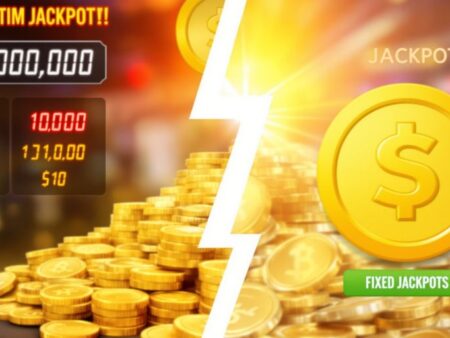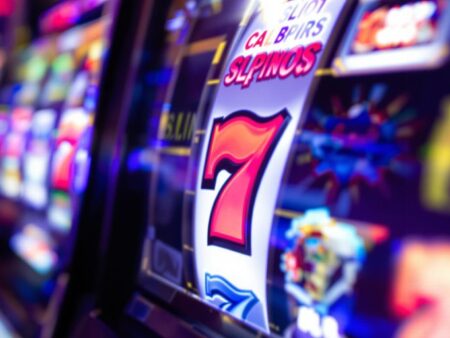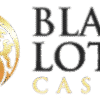Playing slots can be a blast, right? That spinning action, the flashing lights, the hope of hitting that big win. But let’s be real, it’s easy to get carried away and spend more than you planned. That’s where knowing how to manage your bankroll when playing slots really comes into play. It’s not the most exciting part of gambling, but trust me, it’s the most important if you want to keep playing and actually have fun without stressing about your wallet. We’ll break down how to keep your cash in check so you can enjoy those reels.
Key Takeaways
- Figure out how much money you can comfortably set aside for playing slots, and make sure it’s money you can afford to lose without messing up your bills or savings.
- Set clear limits for how much you’ll spend per session, per day, and per week. Also, decide on a win goal and a loss limit to know when to walk away.
- Decide on a ‘unit’ size for your bets, usually a small percentage of your total bankroll. This helps you last longer, even if you hit a rough patch.
- Pick a betting strategy, like betting the same amount each time, and stick to it. Avoid changing your bet size based on how you’re feeling after a win or loss.
- Keep track of your wins and losses. This helps you see where your money is going and make smarter choices next time you play.
Understanding Your Slot Bankroll
Playing slots can be a blast, right? That feeling when the reels spin and you’re hoping for that big win. But let’s be real, it’s not just about luck. To really enjoy yourself and keep playing without a financial headache, you gotta get a handle on your money. That’s where bankroll management comes in. It’s basically your game plan for your gambling cash.
Defining Bankroll Management for Slots
So, what is bankroll management for slots? It’s simply the way you decide how much money you’re going to use for playing slots and how you’re going to spend it. Think of it like a budget, but for your fun money at the casino. It’s about setting rules for yourself so you don’t go overboard. You figure out how much you can spend, how much you’ll bet each time, and when you’ll call it a day, win or lose. It’s not super complicated, but it’s really important.
The Crucial Role of Bankroll Management
Why bother with all this? Well, it stops you from spending more than you can afford. Seriously, this is the big one. If you don’t have a plan, it’s easy to get caught up in the excitement and just keep hitting that spin button, watching your money disappear faster than you thought possible. A good bankroll strategy means you can play longer. Instead of blowing all your cash in ten minutes, you can spread it out and have more fun over more sessions. It also helps you make smarter choices. When you’re not stressed about losing money, you can actually think about your bets. It’s like playing with a clear head, which is always better. Plus, it just makes the whole experience less stressful. Knowing you have limits in place means you’re not going to end up in a bad spot financially. It’s about keeping the fun in gambling.
Why Proper Management Enhances Your Play
When you manage your money well, you’re setting yourself up for a better time. You’re less likely to chase losses, which is a trap many players fall into. You’re also more likely to walk away when you’re ahead, which is how you actually keep some of your winnings. It helps you stay in the game longer, giving you more chances to hit those exciting bonus rounds or jackpots. Think about it: would you rather have one short, stressful session or several enjoyable ones? Proper management helps you achieve the latter. It’s about playing smarter, not just harder. For example, if you have $100 for the day, and you decide to bet $1 per spin, you can play for a good while. If you bet $5 per spin, your session is going to be much shorter. It’s a simple math thing, really. Managing your bankroll is like having a map for your gambling journey; it helps you avoid getting lost and ensures you reach your destination, which is hopefully a fun and responsible gaming experience. You can even explore playing with crypto slots if that’s your thing, but the same money management principles apply. It’s all about control and making sure the game stays a game.
Establishing Your Slot Playing Fund
Alright, so you’ve got the idea of bankroll management down. That’s a good start. But before you even think about spinning those reels, you gotta get your actual playing money sorted. This isn’t just about having cash; it’s about having the right cash, set aside specifically for your slot adventures. It’s like packing for a trip – you wouldn’t just grab random stuff, right? You plan. Same deal here.
Assessing Your Personal Finances
First things first, take a real look at your bank account. No sugarcoating it. How much money do you actually have coming in each month? What are your absolute must-pay bills – rent, utilities, food, that sort of thing? Don’t forget savings goals, either. Once you’ve subtracted all that necessary stuff, what’s left? That leftover money, your discretionary income, is where we start. This is the pool of money you can even consider using for entertainment, including slots. If your essential expenses eat up most of your income, then maybe slots aren’t in the budget right now, and that’s okay. Seriously, no shame in that game. It’s better to be honest with yourself now than to be stressed later.
Determining a Realistic Bankroll Size
Now, from that discretionary income, you need to pick an amount for your slot fund. This amount should be something you can afford to lose without it messing up your life. Think about it like this: if you lost this entire amount in one afternoon, would it cause major problems? If the answer is yes, then the amount is too high. A good rule of thumb is to allocate a small percentage of your monthly discretionary income. For example, if you have $1,000 left after bills and savings, maybe $50 or $100 is a reasonable starting point for your slot bankroll for the month. It’s not about how much you want to spend, but how much you can spend without feeling the pinch. You can always adjust this later if things are going well and you feel comfortable. Maybe start with a smaller amount, like what you might spend on a couple of meals out, and see how that feels. You can check out some general guidelines for slot machine payouts to get a feel for the game’s economics.
Separating Gambling Funds from Essentials
This is super important, and honestly, it’s where a lot of people slip up. Your slot money needs its own separate place. Don’t mix it in with your grocery money or your rent money. Get a separate savings account, a specific envelope, or whatever works for you, but keep it distinct. This physical or mental separation is a powerful psychological tool. It makes it harder to dip into your slot fund for bills, and it also makes it clearer when you’re spending your
Setting Smart Spending Limits
Setting limits is like putting up guardrails on a winding road. You know where you’re going, and you’ve got a plan to keep things from getting out of hand. It’s not about limiting your fun, it’s about making sure the fun lasts. Without these boundaries, it’s way too easy to get carried away, especially when the reels are spinning and you’re on a hot streak, or worse, a cold one.
Implementing Session-Based Limits
Think of a session limit as your personal
Calculating Your Wager Units
Alright, so you’ve got your bankroll sorted, which is fantastic. But how much should you actually bet on each spin? This is where calculating your wager units comes into play, and honestly, it’s a game changer. It’s not just about picking a number; it’s about making that money last and actually enjoying the experience. Think of it like this: you wouldn’t bet your entire paycheck on one lottery ticket, right? Same idea here, but for slots.
The Importance of Unit Size
Why bother with unit sizes? Simple. It’s your primary defense against blowing through your cash too fast. If you’re betting $10 a spin with a $100 bankroll, you’re done in ten spins if you hit a rough patch. That’s no fun. But if you set your unit size to, say, $1, that same $100 bankroll gives you a hundred spins. This small change dramatically increases your playtime and your chances of hitting a decent win. It’s all about managing risk, plain and simple. You want to stay in the game long enough to experience the ups and downs, not just a quick down.
Recommended Percentage for Each Spin
So, what’s a good percentage? Most folks, especially those new to this, aim for 1% to 2% of their total bankroll per spin. If your bankroll is $500, that means your unit size is $5 to $10. For a $100 bankroll, we’re talking $1 to $2 per spin. It sounds small, but trust me, it adds up. It gives you breathing room. Some more experienced players might go up to 5%, but that’s for those with a higher risk tolerance and a bigger bankroll. It’s a personal thing, really, but starting small is always the smart move. You can always adjust later if you feel comfortable. Check out some tips for playing on the go at mobile casinos.
Adjusting Units for Volatility
Now, here’s where it gets a little more nuanced. Slot machines have something called volatility. Low volatility slots pay out smaller amounts more often, while high volatility slots pay out larger amounts less frequently. If you’re playing a high volatility game, you might want to stick to the lower end of that 1-2% recommendation, maybe even less. Why? Because you could go through a lot of spins without seeing a significant win, and you don’t want to burn through your bankroll waiting for that big payout. Conversely, if you’re playing a low volatility slot, you might feel a bit more comfortable with a slightly larger unit size, as the wins tend to come more regularly. It’s about matching your bet size to the game’s behavior. It’s not rocket science, but it does take a little thought. You’re basically trying to ride the waves of the game without getting swamped.
Adopting a Consistent Betting Strategy
Sticking to a plan when you play slots is super important. It’s like having a map for your money, so you don’t get lost. Without a strategy, you might just spin and hope for the best, which, let’s be honest, usually doesn’t end well. A good strategy keeps you playing longer and can actually make the game more fun. It’s about being smart with your cash, not just lucky.
The Benefits of Flat Betting
Flat betting is pretty straightforward. You bet the same amount on every single spin, no matter what. This is a fantastic way to keep your bankroll steady. It’s simple, easy to follow, and really helps you avoid those moments where you suddenly realize you’ve bet way too much after a couple of bad spins. This consistency is key to not blowing through your funds too fast. It’s a solid choice for players who want a predictable experience and aren’t looking to chase big wins with risky bets. It’s a safe bet, if you will.
Understanding Progressive Betting Systems
Now, progressive betting is a bit different. It means you change your bet size based on whether you’re winning or losing. There are two main types: positive progression, where you increase your bet after a win, and negative progression, where you increase your bet after a loss. Positive progression can be exciting because you’re riding a winning streak with bigger bets. Negative progression, though, can be really dangerous. If you hit a losing streak, your bets get bigger and bigger, and you can lose your bankroll in a flash. It’s a bit like trying to catch a falling knife. Most players find that sticking to simpler strategies is better for long-term play. You can explore how different bonus features work in free slots with bonus features to get a feel for game mechanics without risking your money.
Avoiding Impulsive Bet Adjustments
This is where a lot of players go wrong. You hit a big win, and suddenly you feel invincible, so you start betting way more than you planned. Or, you have a few losing spins, and you get frustrated, thinking the next spin has to be a winner, so you increase your bet to try and win back what you lost. Don’t do it! These are emotional decisions, and they rarely end well. Your betting strategy should be your guide, not your feelings. If your plan is to bet $1 per spin, then stick to $1 per spin. Resist the urge to change things up on the fly. It’s tough, I know, but it’s one of the most important parts of managing your money at the slots. Keep your bets steady, and you’ll have a much better time playing.
Choosing the Right Slot Machines
Understanding Return to Player (RTP)
So, you’re looking at a slot machine and wondering, "How do I pick a good one?" Well, it’s not just about the flashy graphics or the exciting sound effects. One of the most important things to get your head around is the Return to Player, or RTP. Think of it like this: for every dollar you bet over a really, really long time, the machine is designed to pay back a certain percentage. So, a slot with a 96% RTP means that, theoretically, for every $100 wagered, $96 will be returned to players. It’s an average, mind you, not a guarantee for any single session. Higher RTP generally means better odds for you in the long run. It’s a simple concept, but it makes a big difference in how long your bankroll might last.
Assessing Slot Volatility Levels
Next up, let’s talk about volatility. This is basically how often a slot pays out and how big those payouts tend to be. It’s a bit of a balancing act. You’ve got three main levels:
- Low Volatility: These machines pay out more often, but the wins are usually pretty small. Great if you want to stretch your playtime and get lots of little wins.
- Medium Volatility: A nice middle ground. You get a decent mix of win frequency and payout size. Not too risky, not too boring.
- High Volatility: These are the ones that pay out less often, but when they do hit, the wins can be huge. This is for players who don’t mind waiting for those big scores and can handle longer dry spells.
Your choice here really depends on your personal style and how much risk you’re comfortable with. If you’re on a tight budget, maybe low or medium volatility is the way to go. If you’re feeling adventurous and have a bigger bankroll, high volatility might be more your speed.
Selecting Games That Align with Your Budget
This is where it all comes together. You’ve got your bankroll, you know your limits, and now you’re looking at the games. It’s super important to pick slots that fit your budget. Don’t just jump into a game with a minimum bet of $5 per spin if your daily limit is only $50. That’s a recipe for disaster, and you’ll be out of the game in no time. Look at the paylines too; some games have hundreds, which can affect how often you might win, but also how much each spin costs if you’re betting on all of them. Always check the bet range before you start. It’s a simple step, but it’s one that so many people skip, and then they wonder why their money disappears so fast. Play smart, pick games that let you enjoy the experience without burning through your funds too quickly. It’s all about making your money last and having fun.
Maximizing Your Playtime with Bonuses
So, you’ve got your bankroll sorted, your limits set, and you’re ready to hit the virtual casino floor. But wait, there’s more! Bonuses are like the sprinkles on your ice cream, making the whole experience a bit sweeter and, importantly, letting you play longer. It’s not just about getting free stuff; it’s smart play. Think of them as a way to extend your gaming sessions without dipping further into your core funds. It’s a win-win, really, if you know how to use them right. Don’t just grab the first bonus you see, though. That’s where the real skill comes in. You gotta be smart about this.
Leveraging Deposit Match Offers
Deposit match offers are super common. Basically, the casino throws in some extra cash based on how much you deposit. If you see a 100% match up to $100, and you deposit $100, you suddenly have $200 to play with. Pretty neat, huh? But here’s the catch: wagering requirements. This means you have to bet that bonus money a certain number of times before you can actually cash out any winnings from it. Always check those numbers. A 30x requirement is way better than a 60x one. It’s like getting a gift, but you have to read the instructions first.
Utilizing Free Spins Strategically
Free spins are another popular bonus, especially for slots. You get a set number of spins on a specific game, or sometimes a choice of games. It’s a fantastic way to try out a new slot or just get more playtime on a favorite. The winnings from free spins usually come with their own set of rules, often similar to deposit match bonuses. So, if you win $20 from 50 free spins, you’ll likely have to wager that $20 a bunch of times. Plan your spins; don’t just go wild. Maybe use them on a slot with a higher RTP to give yourself a better shot at turning those free spins into something you can actually withdraw.
Understanding Bonus Terms and Conditions
This is the part nobody likes reading, but you absolutely have to. The terms and conditions are where all the important details hide. Things like:
- Wagering Requirements: How many times you need to bet the bonus amount.
- Game Restrictions: Some bonuses only apply to certain games, or some games might not count fully towards the wagering.
- Time Limits: You might only have a week or a month to use the bonus or clear the wagering. Don’t let them expire!
- Maximum Cashout: Sometimes, there’s a limit on how much you can actually withdraw from bonus winnings. It’s a bummer, but it happens.
Reading these rules prevents nasty surprises later. It’s like checking the weather before a picnic; you want to be prepared. If a bonus looks too good to be true, it probably has some pretty strict conditions attached. Be a savvy player, read the fine print, and then decide if it’s worth it for your bankroll.
Tracking Your Slot Performance
So, you’ve been spinning the reels, maybe hitting a few wins, maybe not. But how do you actually know if your strategy is working? That’s where tracking your performance comes in. It’s not just about the thrill of the spin; it’s about being smart with your money and your play. Without keeping tabs, you’re basically flying blind, hoping for the best. That’s not really a plan, is it?
Maintaining a Gambling Log
Think of a gambling log like a diary for your slot sessions. You gotta write down the important stuff. What did you play? How long did you play? How much did you spend? And, of course, what did you win or lose? It sounds like a chore, I know, but it’s super important. You can use a simple notebook, a spreadsheet, or even a dedicated app. The key is consistency. You want to capture the details so you can actually use the information later. It’s like keeping receipts for everything; you need that paper trail to see where your money’s going.
Analyzing Wins and Losses
Once you’ve got some data in your log, it’s time to look at it. Don’t just glance; really dig in. What games seem to treat you better? Are you spending more time on high-volatility slots and losing faster, or are the low-volatility ones giving you more playtime for your buck? Maybe you notice you tend to play longer and win more when you stick to a specific bet size. This is where you start to see patterns. It’s not magic; it’s just looking at the numbers. You might find out that those flashy new games aren’t as profitable for you as the older, simpler ones. Or maybe you’re spending too much on bonus buys. Yikes!
Using Data for Future Decisions
This is the payoff, right? All that logging and analyzing leads to smarter choices. If you see that playing a certain game for more than an hour usually leads to bigger losses, then maybe set a timer for that game. If you notice that you win more often when you take short breaks every 30 minutes, then make that a habit. Your log is your personal guide to what works and what doesn’t. It helps you adjust your bankroll management, your bet sizes, and even the types of games you play. It’s about playing smarter, not just playing more. This way, you’re not just guessing; you’re making informed decisions that can help you stretch your bankroll further and hopefully have more fun.
Maintaining Discipline at the Slots
Okay, so you’ve got your bankroll sorted, your limits set, and you’re ready to spin. But here’s the real kicker: sticking to the plan when the reels are flying and the wins (or losses) start rolling in. It’s easy to get caught up in the moment, right? One minute you’re playing by the book, the next you’re chasing a loss or betting way more than you intended because you just know the next spin is going to be the big one. That’s where discipline comes in, and honestly, it’s probably the hardest part of this whole thing.
Avoiding Emotionally Driven Bets
This is a big one. When you’re winning, it feels amazing, and you might think, "Why not bet a little bigger? I’m on a roll!" Or, if you’re losing, that sinking feeling can make you want to bet more, faster, to try and win it all back. Stop. Just stop. Those feelings are your bankroll’s worst enemy. Think of it like this: your bankroll is a separate entity from your emotions. It doesn’t care if you’re happy, sad, or frustrated. It just goes down if you bet too much. Try to catch yourself before you make a bet based on how you feel rather than what your plan says. It’s tough, I know. I’ve been there, staring at the screen, telling myself "just one more big bet." It rarely ends well.
Sticking Rigorously to Your Limits
This is where the rubber meets the road. You set those limits for a reason. If your session limit is $50, and you’ve lost $45, don’t suddenly decide to bet $10 on the next spin to try and get back to even. That’s not how it works. You’ve hit your limit, or you’re very close to it. Walk away. Seriously. It’s like a diet; you don’t eat the whole cake because you already had one slice. And if you hit a win limit? Take the win and walk away too! It’s so tempting to keep going, but securing those wins is just as important as cutting your losses. Remember that $50 session limit? It’s there to protect you. Respect it.
The Value of Taking Regular Breaks
When you’re in the zone, time can just fly by. You might not even realize how long you’ve been playing or how much you’ve spent. Taking breaks isn’t just about resting your eyes; it’s about resetting your brain. Step away from the machine, get some fresh air, grab a drink of water, maybe even do a few jumping jacks. This helps you come back with a clearer head and a better perspective on your bankroll and your limits. It’s easy to lose track when you’re focused on the flashing lights and sounds. A short break can prevent a costly mistake. Try setting a timer for every 30 or 45 minutes. When it goes off, take a 5-minute break. It sounds simple, but it makes a huge difference.
Advanced Bankroll Strategies
So, you’ve got your basic bankroll management down pat. You know your limits, you’re betting smart units, and you’re not chasing losses. That’s awesome! But what if you want to take things up a notch? There are some more complex ways to manage your money that can really make a difference over time. It’s not just about setting limits; it’s about being strategic with every dollar you set aside for fun.
Considering the Kelly Criterion
This one sounds fancy, and honestly, it kind of is. The Kelly Criterion is a mathematical formula. It helps you figure out the best amount to bet based on your perceived advantage. Think of it like this: if you’re playing a game where you think you have a slight edge, the Kelly Criterion tells you how much of your bankroll to put on the line to maximize your long-term gains. It’s not for the faint of heart, and it requires some serious number crunching, but for those who like to get really analytical, it’s a powerful tool. It’s all about betting the right amount to grow your bankroll without risking too much. You’ll need to do some research to understand the formula and how to apply it to slots, which can be tricky since slots are mostly luck-based. But the principle of betting proportionally to your perceived edge is solid.
Splitting Funds Across Different Games
If you’re not just a slots player – maybe you dabble in blackjack or video poker too – you might want to think about splitting your bankroll. Instead of having one big pot for everything, divide it up. For example, you could set aside $500 specifically for slots, $300 for table games, and maybe $200 for sports betting if that’s your thing. This way, a bad run at the blackjack table doesn’t wipe out your entire gambling fund. It creates separate safety nets. It’s like having different piggy banks for different purposes; it just makes sense.
Implementing a Bankroll Growth Plan
This is where things get really interesting. As your bankroll grows, you might be tempted to just start betting bigger amounts. That’s natural! But a smart growth plan is more about steady, controlled increases. Instead of jumping from $1 bets to $10 bets after a good win, maybe you move up to $2 bets. It’s about protecting your gains while still allowing yourself to win more when you’re on a hot streak. Think of it as a staircase, not a rocket ship. You want to climb, but you don’t want to fall off the top step. This requires patience, something that’s often hard to find when the reels are spinning and the wins are coming in.
Wrapping It Up: Your Slot Journey Ahead
So, we’ve gone over how to keep your slot playing fun and not a financial headache. Remember, setting aside a specific amount of money you’re okay with losing is the big first step. Then, figure out how much you’ll bet per spin – keeping it small compared to your total funds is smart. Sticking to these limits, even when you’re on a hot streak or a cold one, is really important. It’s all about making sure your time playing slots stays enjoyable and doesn’t cause any real-world money problems. Play smart, have fun, and hopefully, those reels keep spinning in your favor!
Frequently Asked Questions
What exactly is a slot bankroll?
Think of your bankroll as your gaming money, like a special fund just for playing slots. It’s the total amount you’re okay with spending, and it should be separate from your money for bills or everyday stuff. This way, you only play with what you can afford to lose, making sure your regular life stays on track.
Why is managing my slot money so crucial?
It’s super important because it stops you from spending too much money. Having a plan means you won’t get carried away and lose more than you planned. It also helps you play for a longer time because you’re not burning through your money too fast. Plus, it makes playing more fun and less stressful!
How do I figure out how much money to set aside for slots?
First, figure out how much extra money you have after paying for all your important things. Then, decide on a specific amount from that extra money that you’re comfortable using for slots. It should be an amount that won’t cause problems if you happen to lose it.
What kind of spending limits should I set?
It’s smart to set limits for how much you can spend during each play session, each day, and even each week. Also, decide on a point where if you win a certain amount, you’ll stop playing to keep your winnings, and a point where if you lose a certain amount, you’ll also stop to avoid losing more.
What is a ‘betting unit’ and how much should it be?
A ‘unit’ is basically the amount you bet on each spin. A good rule is to make your bet unit a very small part of your total bankroll, like 1% or 2%. This way, even if you hit a rough patch with losses, your money will last much longer, giving you more chances to play.
How do the type of slot machine and its features affect my bankroll?
Choosing slots that pay back more often (higher RTP) and don’t have wild swings in wins and losses (lower volatility) can help your money last longer. These games are usually a better fit for a set budget and can give you more playtime.
Can bonuses help me manage my bankroll better?
Yes, bonuses like free spins or deposit matches can be great for extending your playtime without spending extra cash. Just be sure to read the rules carefully, like any ‘playthrough’ requirements, to understand how they work before you use them.
Is keeping track of my wins and losses helpful for bankroll management?
Absolutely! Keeping a simple log of how much you spend, win, and lose helps you see where your money is going. Looking at this information later can show you what’s working and what’s not, helping you make smarter choices for your next gaming session.























